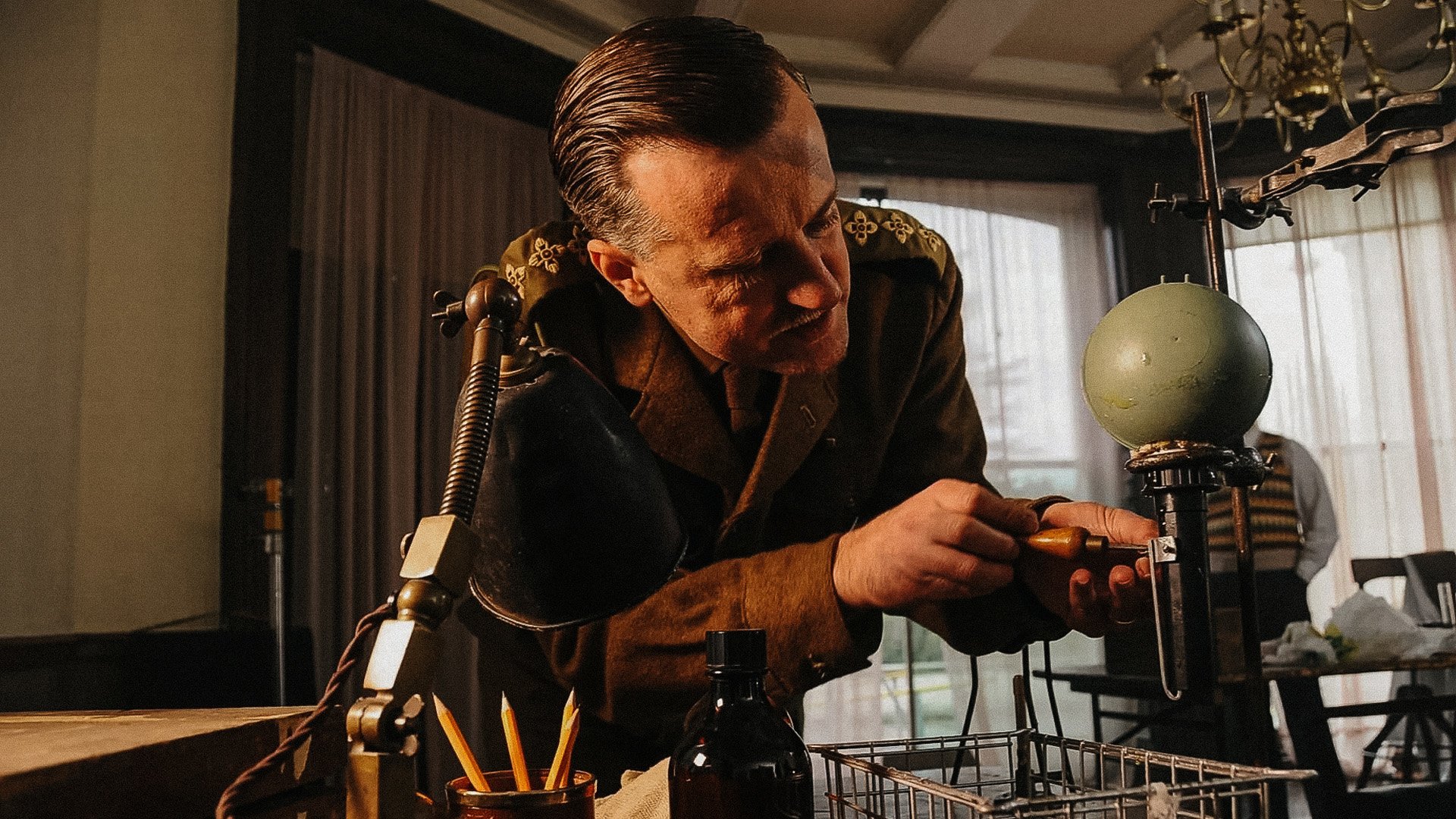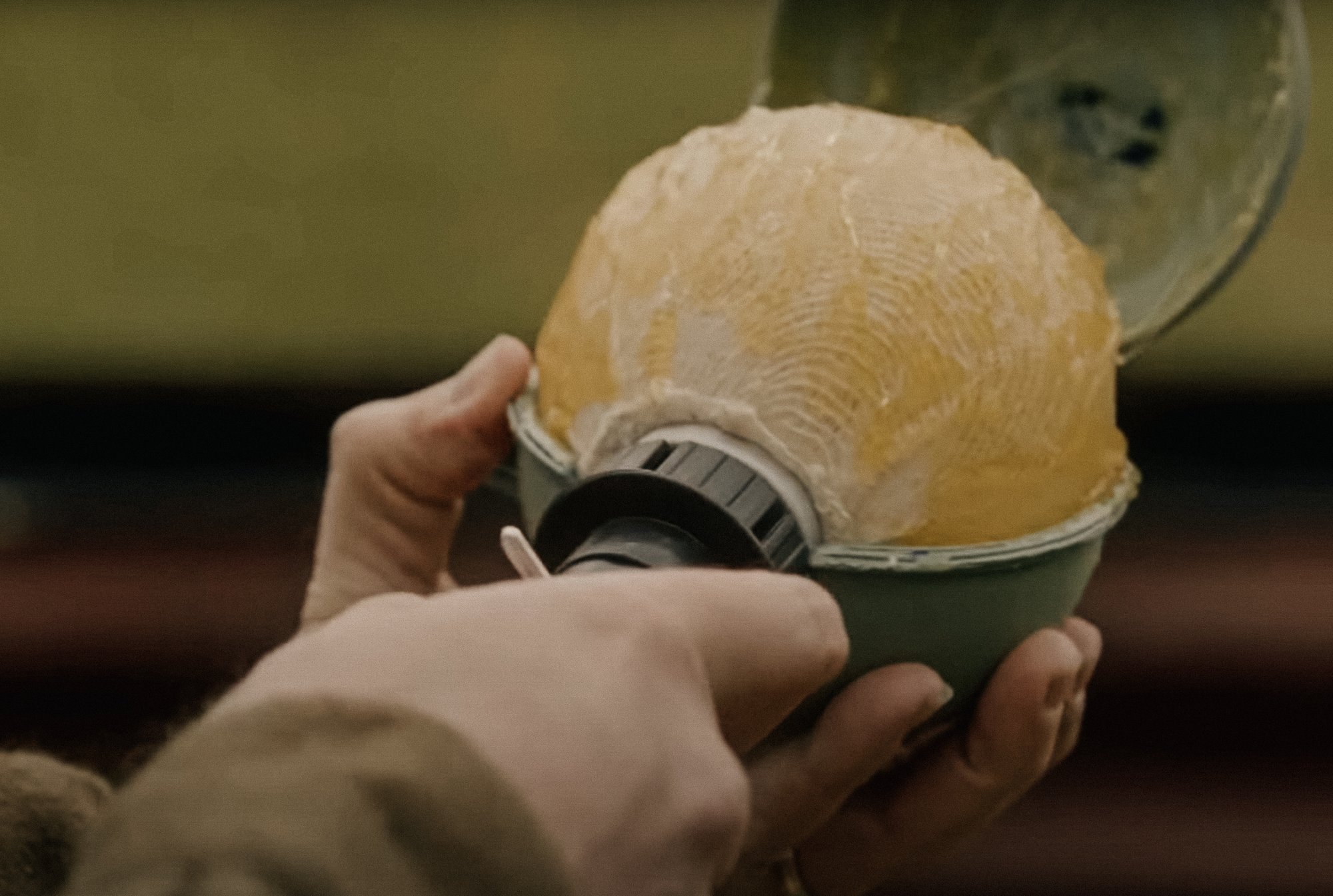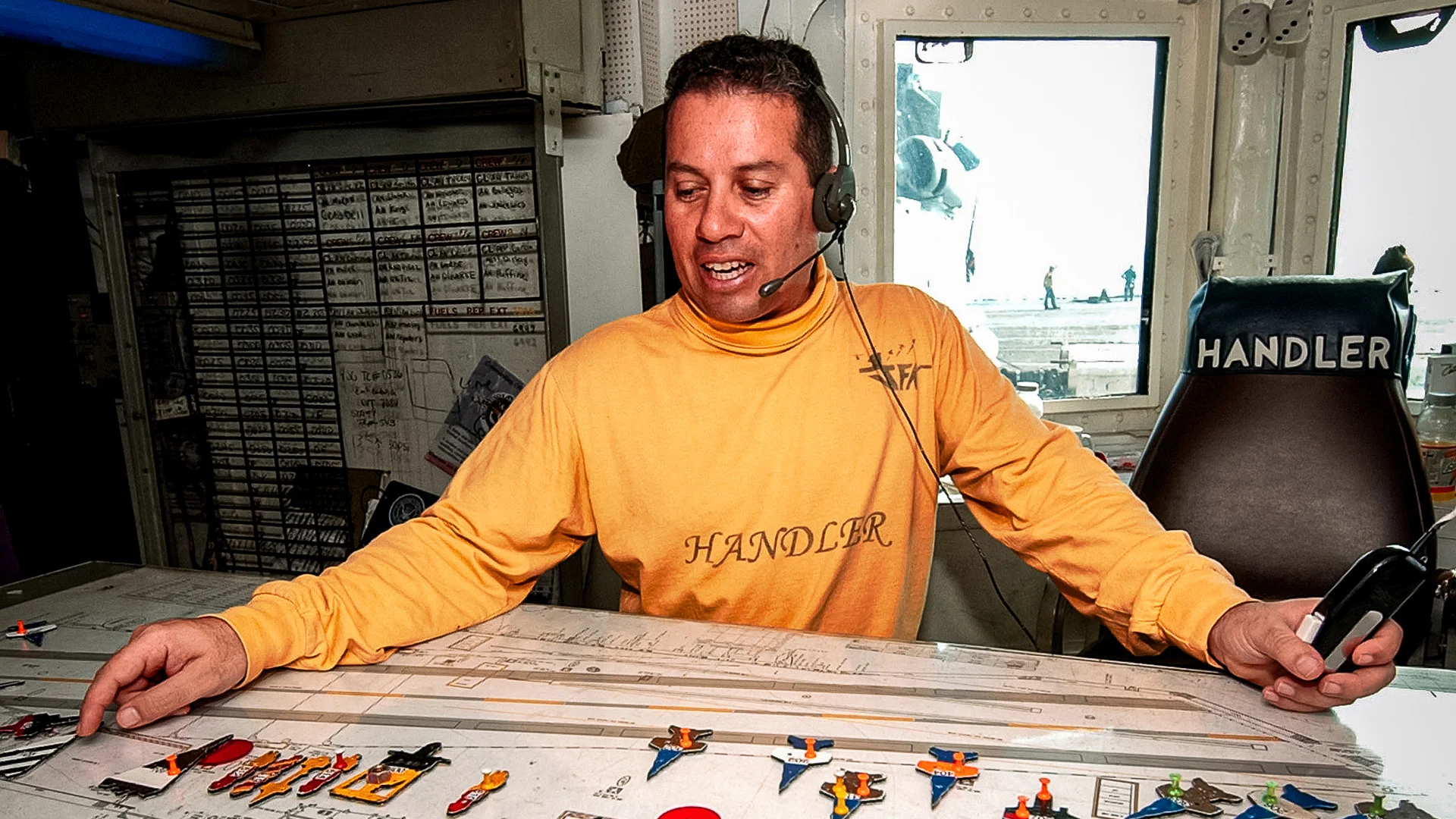
Winston Churchill’s Ministry of Defence 1, i.e., “Churchill’s Toyshop,” created at least 26 new weapons during World War II. Photo courtesy of the Discovery Channel.
In June 1940, British Prime Minister Winston Churchill ordered his new paramilitary unit, the Special Operations Executive, to “set Europe ablaze.” To accomplish this objective, the SOE relied on a military research-and-development department of the United Kingdom’s War Office to invent unique weapons for irregular warfare. Housed in a small underground workshop secluded in the cellars of the London offices of Radio Normandie was the Ministry of Defence 1 (MD1) — but as time went by, everybody began calling it “Churchill’s Toyshop” for its wacky war inventions.
The “toys” designed by MD1 ranged from booby traps and mines to “tank destroyers” and “ship-sinking” devices. Bizarrely, two of its most successful contraptions required one special ingredient: candy.

A close-up of the Explosive Toffee Apple sticky bomb developed by Churchill’s Toyshop during the war. Screenshot courtesy of YouTube.
The first weapon to use candy was the limpet mine, which required combat swimmers to tow a small, bowl-shaped explosive device on their belts and then attach it to ships via magnets. Stuart Macrae, an Armchair Science magazine editor who conducted Mythbusters-like experiments between the 1920s and 1930s, proposed using a popular hard candy called aniseed balls to act as a bomb timer. Macrae reasoned that since hard candy takes minutes to dissolve in our mouths, it would take a similar amount of time to dissolve underwater, allowing a saboteur to escape.
It worked like this: A combat swimmer would plant and arm the limpet mine and begin their evasion. The spring would hit the hard candy, starting the “timer” and preventing detonation. But when the candy dissolved — essentially acting as a bomb fuse — the primer struck the detonator, initiating the explosion. Remarkably, the Allies successfully used them in Singapore during a commando mission known as Operation Jaywick. British and Australian commandos sank or damaged seven Japanese ships with limpet mines and candy fuses.
The hard-candy time fuse and limpet mine combination wasn’t the only food-related device. There was also the Explosive Toffee Apple, which was developed as a sticky bomb. Its design featured a handle attached to a glass ball slathered with either toffee or a glue-covered sock. This sticky substance would cling to a target for a moment before exploding, but it also limited the spread of the explosive residue inside, allowing for a more concentrated detonation. Churchill signed off on the manufacturing, writing, “sticky bomb, make 1 million.” In fact, more than 2.5 million sticky bombs were produced and prominently saw action in Europe, North Africa, and the Pacific.
By the end of World War II, Churchill’s Toyshop developed at least 26 brand-new weapons for the Allies — most of which did not involve candy. The other weaponry included a handheld spigot mortar known as the Projector, Infantry, Anti Tank gun, or PIAT, for use against tanks; a needle-like booby trap called the “AP Switch” that fired a .303 cartridge steel bullet when stepped on; and even a giant bridge-laying tank known as the “Great Eastern” that supported vehicles in river crossings.
Read Next: The Miniature Models Used by the CIA to Meticulously Plan High-Stakes Operations

Matt Fratus is a history staff writer for Coffee or Die. He prides himself on uncovering the most fascinating tales of history by sharing them through any means of engaging storytelling. He writes for his micro-blog @LateNightHistory on Instagram, where he shares the story behind the image. He is also the host of the Late Night History podcast. When not writing about history, Matt enjoys volunteering for One More Wave and rooting for Boston sports teams.
BRCC partners with Team Room Design for an exclusive T-shirt release!
Thirty Seconds Out has partnered with BRCC for an exclusive shirt design invoking the God of Winter.
Lucas O'Hara of Grizzly Forge has teamed up with BRCC for a badass, exclusive Shirt Club T-shirt design featuring his most popular knife and tiomahawk.
Coffee or Die sits down with one of the graphic designers behind Black Rifle Coffee's signature look and vibe.
Biden will award the Medal of Honor to a Vietnam War Army helicopter pilot who risked his life to save a reconnaissance team from almost certain death.
Ever wonder how much Jack Mandaville would f*ck sh*t up if he went back in time? The American Revolution didn't even see him coming.
A nearly 200-year-old West Point time capsule that at first appeared to yield little more than dust contains hidden treasure, the US Military Academy said.
Since the 1920s, a low-tech tabletop replica of an aircraft carrier’s flight deck has been an essential tool in coordinating air operations.












